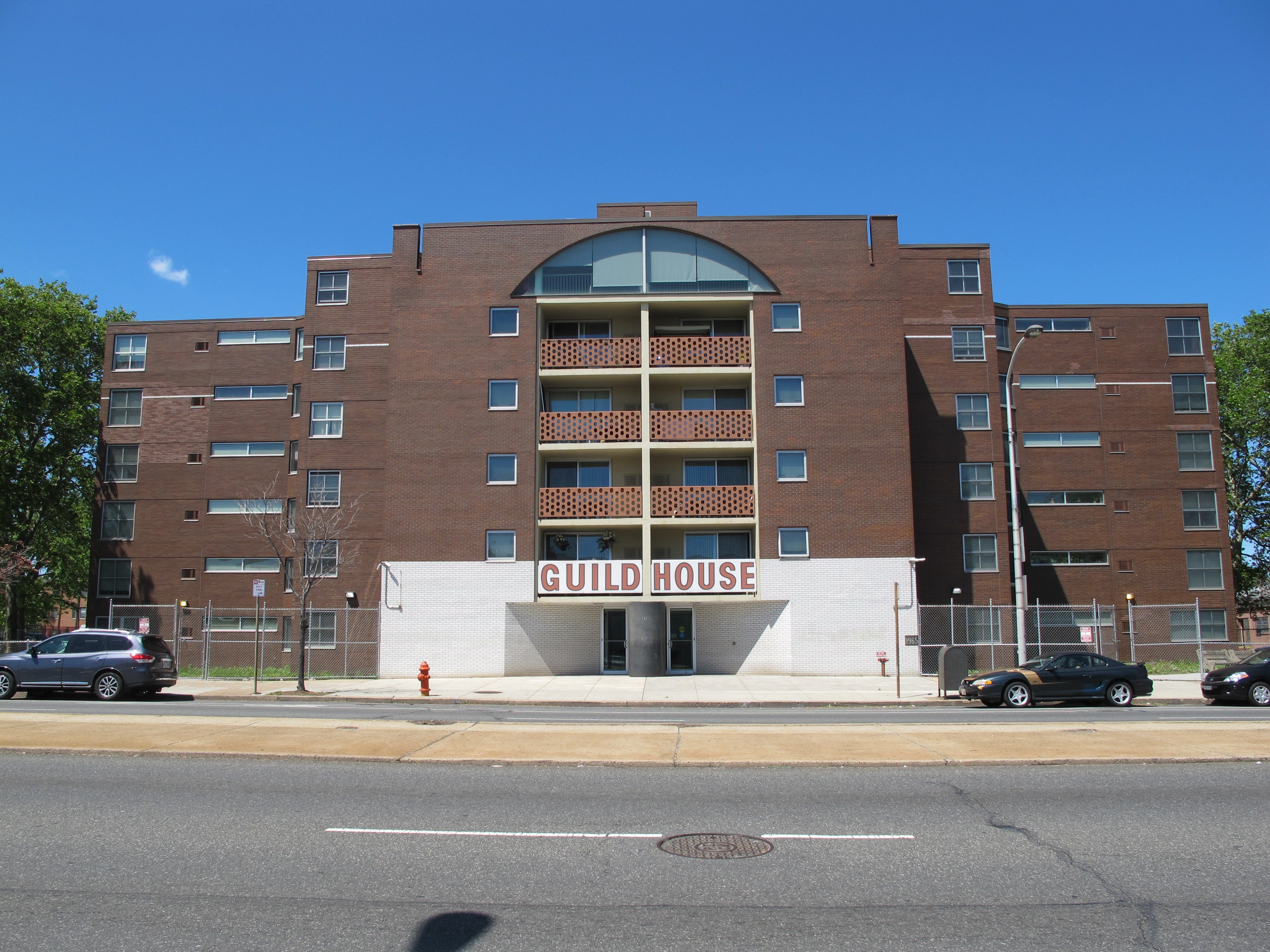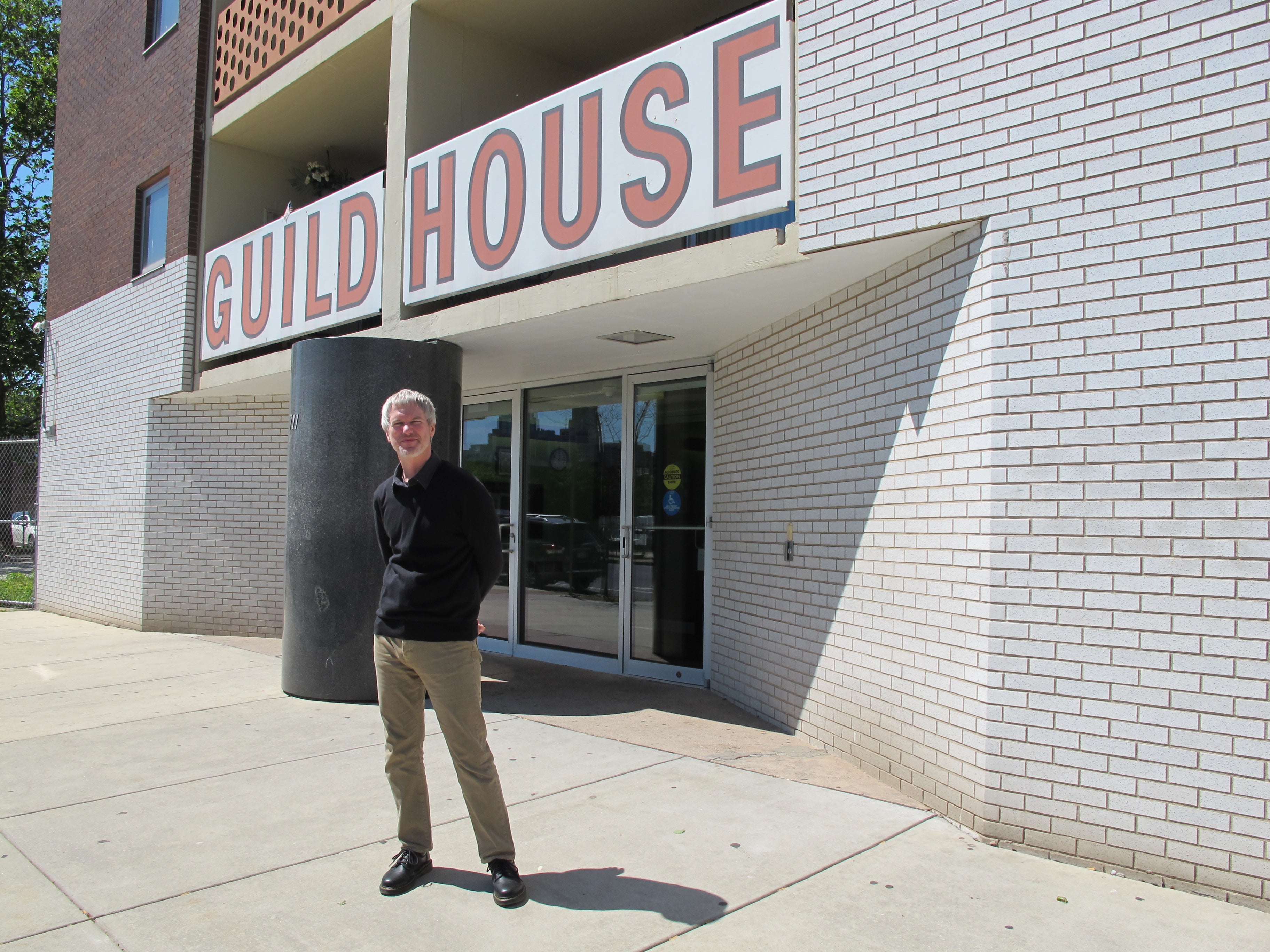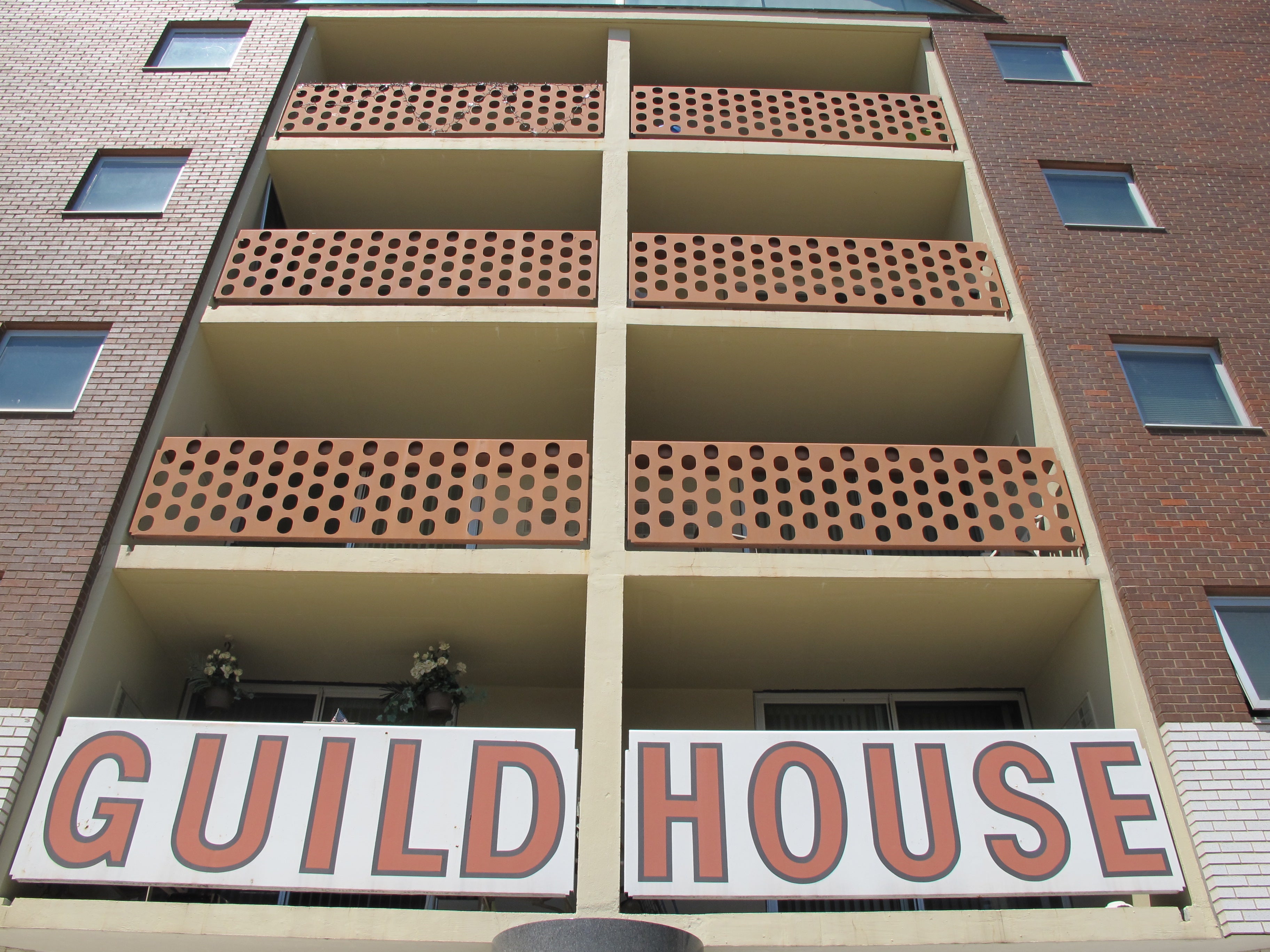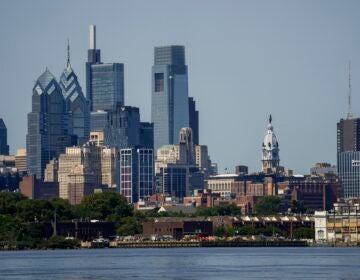Building Stories: Guild House

For our spring series Building Stories, we’re bringing you design postcards from around the city. We’re asking Philadelphia architects to take us to their favorite underappreciated or misunderstood buildings in Philadelphia, and explain what makes them great.
BUILDING: Guild House
YEARS BUILT: 1961-64
ARCHITECT: Robert Venturi, Venturi & Rauch
LOCATION: 711 SPRING GARDEN STREET [MAP]
WHO: Jules Dingle, DIGSAU
WHY: ORDINARY YET REVOLUTIONARY, PhilADELPHIAN, MESSY VITALITY
This week Philadelphia’s own Robert Venturi and Denise Scott Brown will be honored with the American Institute of Architects’ highest prize: the Gold Medal.
On Spring Garden Street between 7th and 8th streets sits Guild House, an early work of Venturi’s, built in the early 1960s as affordable housing for seniors.
It is a sly take on Modern architecture that is identified as the progenitor of Post-Modernism. It is a building that Digsau’s Jules Dingle places in the pantheon of Philadelphia architecture, and sees power in its use of ordinary materials to create a revolutionary building. Even though it may not read as especially radical today, it was groundbreaking when it was built.
“In a time of very heroic and abstract Modernism one of the goals of this project was to get in touch with the human experience,” Dingle says. Like a Philadelphia rowhouse, Guild House uses humble, ordinary materials: red brick, double-hung windows, and chain-link fence.
Depending on whom you ask, Guild House is either credited, or blamed, for inspiring decades of Post-Modern architecture, making it also “the scapegoat for everything that that name implies,” Dingle notes. “It was a movement that preoccupied our profession for decades. With that came an architectural language that is, in this city and many others, ubiquitous. In particular, our own skyline is identified with it, so maybe in some sense, that makes this more ordinary than it was in 1964.”
The buildings that lead the revolution are often the most interesting.
Dingle also sees Guild House as a very Philadelphia building. He sees references to 19th century Philly architect Frank Furness in the heavy granite column that anchors – and blocks – the entrance, the whimsy of Willis Hale, and a dialogue with Louis Kahn “light-as-a-feather” brick arched window.
“Maybe the reason that I find this building to be lasting and relevant is that it’s not as much about the form or the planning of the building, but more the philosophy behind its making. The work of Denise Scott Brown and Bob Venturi and Steve Izenour and everyone in that firm was guided by an open-mindedness that, as they put it, allowed them to deal with the messy vitality of what was really a radically changing world around them. Their work acknowledges conflict, it celebrates ordinary, it realizes the value of juxtaposition, and of course humor. Those are things that are really relevant today.”
“As a city, we should be extra proud that Bob Venturi and Denise Scott Brown are receiving the Gold Medal this week at the AIA Convention in, of all places, right here in Philadelphia”
WHYY is your source for fact-based, in-depth journalism and information. As a nonprofit organization, we rely on financial support from readers like you. Please give today.










